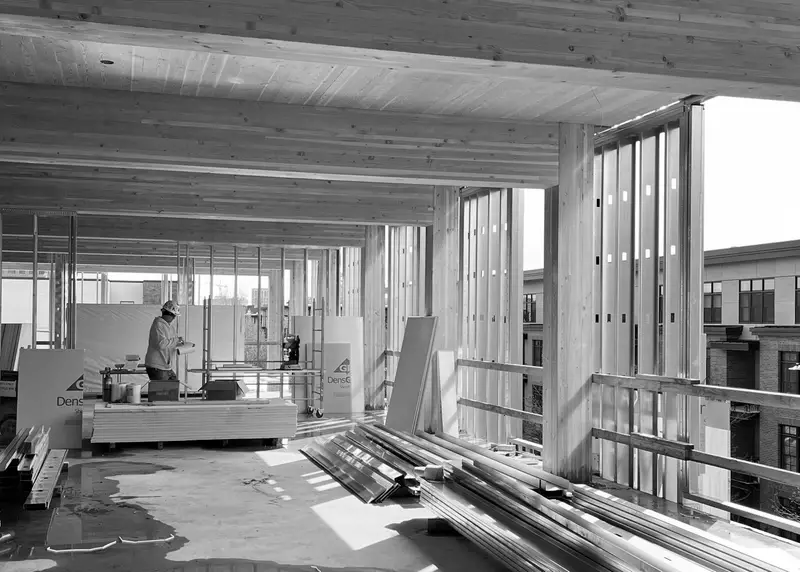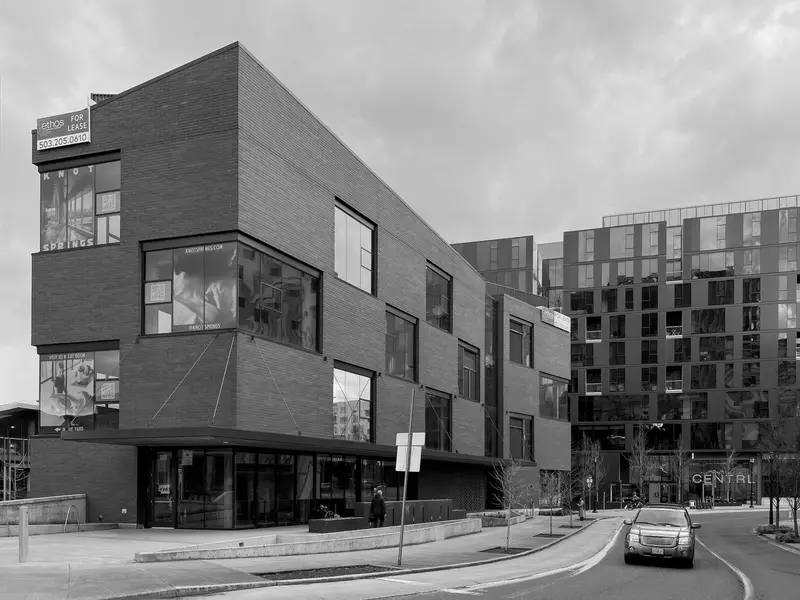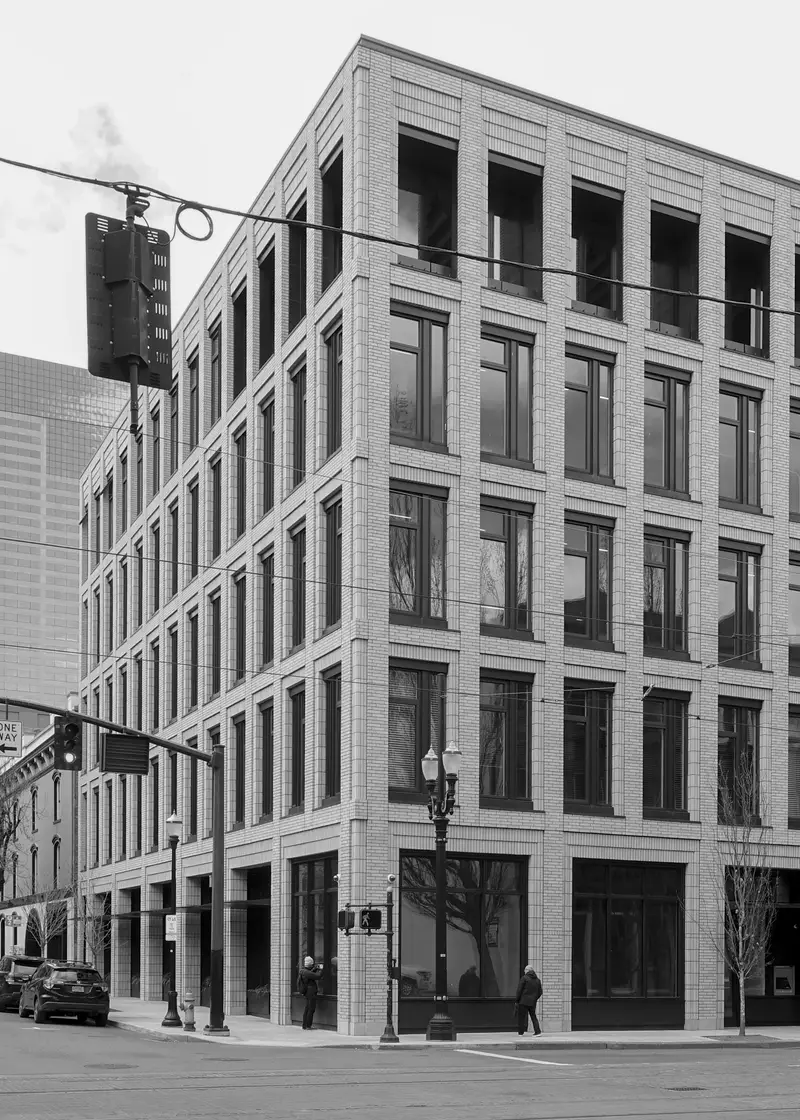Insights from the International Mass Timber Conference 2023
Head of Communications at Jasmax, Roberta Johnson, shares insights from the International Mass Timber Conference 2023. Held in Portland, a city in North America which shares a similar seismic profile to Ōtautahi Christchurch, the conference also provided the opportunity to visit timber projects with direct relevance to Aotearoa New Zealand.
Earlier this year, I attended the International Mass Timber Conference in Portland with Jasmax leaders Shannon Joe, Head of Design, and Stephen Thurman, Head of Knowledge and Innovation. The three-day annual event, which brought together over 3,000 delegates, is the largest gathering of mass timber experts in the world. It provided the invaluable opportunity to hear from international leaders in the field and to visit local projects demonstrating innovation in mass timber design.
Alongside thought-provoking presentations from keynote speakers on the social and environmental potential of mass timber, the talks I attended provided a unique window into the risks and opportunities associated with mass timber for asset owners, investors, funders and insurers:
The ratio between the carbon emissions generated by the construction sector and the R&D funding allocated directly to this sector is grossly disproportionate: Whilst the construction sector is responsible for 40% of carbon emissions globally, and the US contributes to 30% of global spending on climate research, only 0.18% of the Federal R&D budget is targeted towards the construction sector. Significantly more government investment into proven ways to reduce construction carbon will be required to support the sector to meet global net zero carbon targets.
Designs which combine and optimise mass timber primary structures with steel and concrete can prove easier to fund and insure: Speakers including Mike Brady, Director at JLL Capital Markets, and Mark Gadaire, Senior Vice President at Chubb Group, reinforced the message that performance, safety and price remain primary drivers in the asset and insurance market. Often described as ‘hybrid’ solutions, timber structures incorporating concrete and steel can contribute to the de-risking of projects for investors and insurers as the performance of these materials is currently better understood. The projects we visited around Portland also demonstrated the design benefits of a hybrid approach, especially in the category of four-to-six storey commercial developments. These were designed to reveal as much timber as possible to achieve maximum impact for tenants and occupiers. However, we typically saw examples of concrete topping slabs and stair cores used to enhance acoustics, fire rating and shear performance, helping these hybrid buildings perform optimally across many measures.
Choosing mass timber can provide programme and cost benefits and secure premium returns in residential development: When lighter foundations and prefabrication equate to a more efficient construction programme, the fast-track cost savings of mass timber can make the difference that get projects over the line. The 25-storey Ascent Tower in Milwaukee, a ‘trophy-class’ asset developed by New Land Enterprises, is described as the world’s tallest mass timber tower, and is a great example of this. The programme to erect the tower was shortened by four and a half months using mass timber, rather than a concrete primary structure. Tim Gokhman, MD of New Land Enterprises, shared that his major challenge was differentiating the project to attract premium rents. Alongside providing desirable amenities, timber provided the necessary ‘cool-factor’ to successfully market the development. Timber is 50% exposed throughout the apartments to make that benefit tangible to prospective tenants. Gokhman described the biophilic effect of timber in apartments as ‘magical’. 4D BIM modelling was used to test the entire construction process, which ran for 16 months from August 2020 to December 2021, from start to finish with the aim of enhanced coordination and sequencing.
Despite the incentive to be ‘the tallest’ or ‘first’ in a sub-category of timber design, the majority of commercial mass timber buildings going up in the US are mid-rise, between four-to-six storeys high, a scale well suited to achieving critical mass in the Aotearoa New Zealand and Australian contexts.
Whilst in Portland, we visited a number of commercial projects which represented learnings for Australasia:
Case Study: Thesis Building, Portland
The four-storey Thesis headquarters currently under construction provides a benchmark for high-quality mass timber design in Portland. The construction programme for this project, which is located in a residential neighbourhood, is just one year. Reducing site noise and disruption are significant advantages associated with prefabrication. A simple footprint and internal layout are also key to speed.

Case Study: Sideyard, Portland
Sideyard is the baby brother to ‘YARD’, a mixed-use residential building intended as a catalyst project for the city of Portland. YARD provided a prominent gateway to the Central Eastside community and Burnside area undergoing regeneration. The site for Sideyard was left over from roadway reconfiguration and considered of little value due to its small footprint and awkward shape. The building is reflective of a trend to unlock the potential of sites otherwise considered of little value, by capitalising on the speed of erecting prefabricated structures.

Case Study: The PAE Living Building, Portland
The world’s first commercial living building, PAE, was designed to last 500 years and survive a magnitude 7.5 earthquake. An impressive five-storey structure, the building combines a glulam primary structure and cross-laminated timber (CLT) floors, reducing embodied emissions by 30%. A sense of permanence and provenance is pronounced in this building. The inspiration from the neighbouring 1880’s and 1890’s Old Town warehouses is clear in the heavy timber structure and finely detailed brick façade.

In summary, the research trip to Portland not only provided us with valuable insights, but also instilled confidence that there is momentum in mass timber globally, even in similarly seismically equivalent locations to Aotearoa New Zealand. At Jasmax, we continue to challenge ourselves to develop knowledge, systems and solutions that build on our real-world experience, combined with the insights and intelligence of experts from around the world.